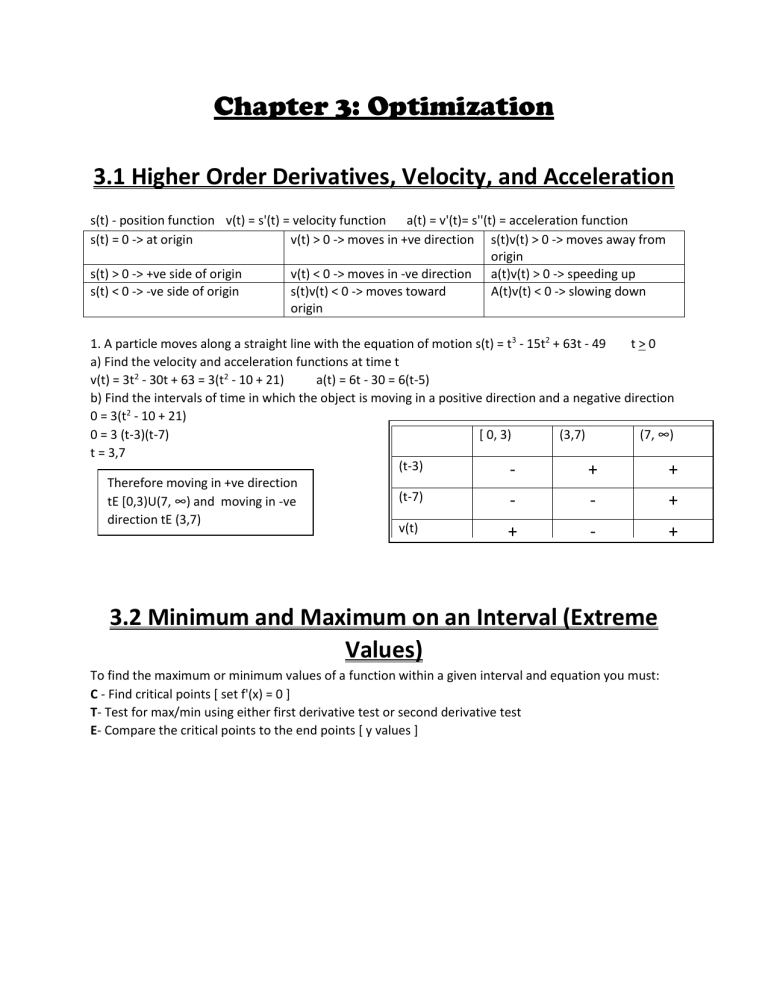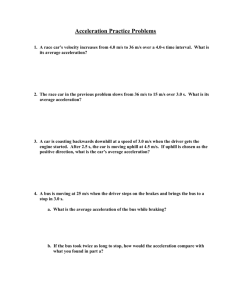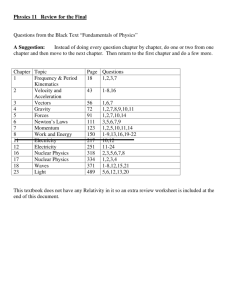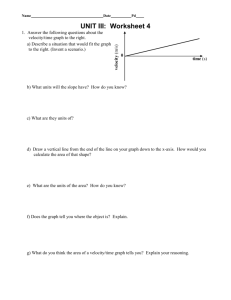Summary of chapter 3

Chapter 3: Optimization
3.1 Higher Order Derivatives, Velocity, and Acceleration
s(t) - position function v(t) = s'(t) = velocity function a(t) = v'(t)= s''(t) = acceleration function s(t) = 0 -> at origin s(t) > 0 -> +ve side of origin s(t) < 0 -> -ve side of origin v(t) > 0 -> moves in +ve direction s(t)v(t) > 0 -> moves away from origin v(t) < 0 -> moves in -ve direction a(t)v(t) > 0 -> speeding up s(t)v(t) < 0 -> moves toward origin
A(t)v(t) < 0 -> slowing down
1. A particle moves along a straight line with the equation of motion s(t) = t 3 - 15t 2 + 63t - 49 t > 0 a) Find the velocity and acceleration functions at time t v(t) = 3t 2 - 30t + 63 = 3(t 2 - 10 + 21) a(t) = 6t - 30 = 6(t-5) b) Find the intervals of time in which the object is moving in a positive direction and a negative direction
0 = 3(t 2 - 10 + 21)
0 = 3 (t-3)(t-7) t = 3,7
[ 0, 3) (3,7) (7, ∞)
Therefore moving in +ve direction tE [0,3)U(7, ∞) and moving in -ve direction tE (3,7)
(t-3)
(t-7) v(t)
-
-
+
+
-
-
+
+
+
3.2 Minimum and Maximum on an Interval (Extreme
Values)
To find the maximum or minimum values of a function within a given interval and equation you must:
C - Find critical points [ set f'(x) = 0 ]
T- Test for max/min using either first derivative test or second derivative test
E- Compare the critical points to the end points [ y values ]
3.3 And 3.4 Optimization Problems
How to approach problems:
1) Read the problem.
Draw and label a diagram (if possible).
Identify the variables.
2) Determine the function that needs to be optimized.
3) Determine restriction on the domain.
4) Find all the extreme values and critical points.
Types of problems:
Type 1:
Geometry (surface area/volume)
Type 2:
Shortest distance
Type 3:
Cost/Revenue
Above ground/underwater
Revenue function: R(x)= # of items sold x selling price
Cost function: C(x)= # of items x price paid for items
Profit function: R(x) – C(x)
Example:
An open-topped box is to be made from a square of cardboard, that is 24 cm long, by cutting out equal squares from each corner and folding up the flaps to make sides. What is the greatest volume possible for the box, and what are its dimensions?
Questions
1) A bus service carries 10000 people daily between Kipling and Downtown. The cost to ride the bus is $20. Research shows that if the fare increases by $0.50, 200 fewer people will ride the bus.
What fare should be charged to get the maximum revenue, given that the bus company must have at least $ 130000 in fares a day to cover operating costs?
2) A train leaves the station at 10:00am and travels due south at a speed of 60km/h. Another train has been heading due west at 45km/h and reaches the same station at 11:00am. At what time were the trains closest together?
3) Determine the maximum area of a rectangle that can be inscribed in the parabola y=6-x^2 and the x-axis as shown in the diagram. Find the dimensions that give the largest area of such a rectangle.











